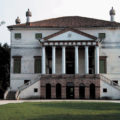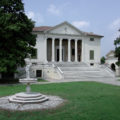Between the 12th and 10th centuries BC (recent and final bronze age) Fratta was an anthropic center of singular importance, as evidenced by the findings of the necropolis of Narde, whose precious “treasures” are kept in the local National Museum.
Nevertheless, the first sound historical evidence dates back to 1054, the period in which the Bishop of Adria, Benedict I, obtained the estate that included Vespara, Presciane, Castelguglielmo, San Bellino and Fratta (at the time known as Villa Comeda). In 1104 the Bishops built a Castle there, around which terrible struggles took place for its possession between the Bishops, the Veronesi and the Estensi, and it was destroyed and rebuilt
several times, before passing into the hands of the “Pepoli”. The last vestiges of the Castle disappeared for good in the early XIX century.
In 1395, Fratta passed under the control of the Venetian Republic and followed its fate up to the peace of Campoformio in 1797.
In the XVI century, thanks to Lucrezia Gonzaga, lived between 1541 and 1576 and married to Giampaolo Manfrone, captain of fortune in attendance to the Most Serene Republic of Venice and owner of a castle-mansion, and to the Accademia dei Pastori Frattegiani, Fratta becomes centre of one of the most renowned yard in the Po Valley, gathering attention, interest and presence of intellectuals and artists and becoming the chosen place for the most important families of the Venetian Patrician.
The Venetian Republic always took particular care of this area and many Venetian nobles built very handsome, magnificent patrician Villas: Villa Badoer by Andrea Palladio, built in 1556; the palladian Villa Grimani Molin, now Avezzù Villa, XVI century; Palazzo Villa Cornoldi now Fanan, from the XVIII century; Villa Conti Oroboni (Villa of the Oroboni counts), XVII century; Casa Dolfin, now called the Divina Provvidenza, XVIII century; Casa Matteotti, XVIII century; Villa Davì now Guzzon-Zanobbi, XVIII century; Palazzo Dolfin-Boniotti now hosting the “Manegium”, XVII century; Villa Labia, a nineteenth century construction with its superb park; the Parish Church dedicated to the Saints Peter and Paul, designed by Zuane Bellettato and built between 1552 and 1682 on the site of a previously existing church. The harmonious church of St. Francis, the only example of Romanesque-Lombardy style in Polesine, dates back to 1400.
With the Congress of Vienna, Fratta passed under Austrian domination and stayed that way until 1866, the year of the third war of Independence.
In that period, Fratta participated with true enthusiasm and true devotion in the causes of the Risorgimento. The episode of the Carbonari of Fratta is one of the most glorious and painful pages in the dawn of the Risorgimento. This event began on 11th November 1818, when Dame Cecilia Monti from Fratta offered the Carbonari, at her home (Villa Grimani Molin), the famous lunch that gave rise to so many disasters. A few days after that fatal rendezvous, all the participants were arrested. This was the first seed in a long series of trials that opened the sorrowful doors of the Spielberg and other harsh prisons, such as Venice and Lubiana. Count Antonio Fortunato Oroboni, Cecilia Monti, Angelo Gambato, Antonio Francesco Villa, Don Marco Fortini, Giovanni Monti, Antonio and Carlo Poli, Giacomo, Sebastiano and Federico Monti, Domenico and
Antonio Davì, Vincenzo Zerbini, Domenico Grindati: these are the names of the “Carbonari of Fratta”.
Having grown up with the doctrine and example of these brave people, another great citizen of Fratta offered himself as a victim for the love of liberty and social justice: Giacomo Matteotti, killed by fascists on 10th June 1924.





